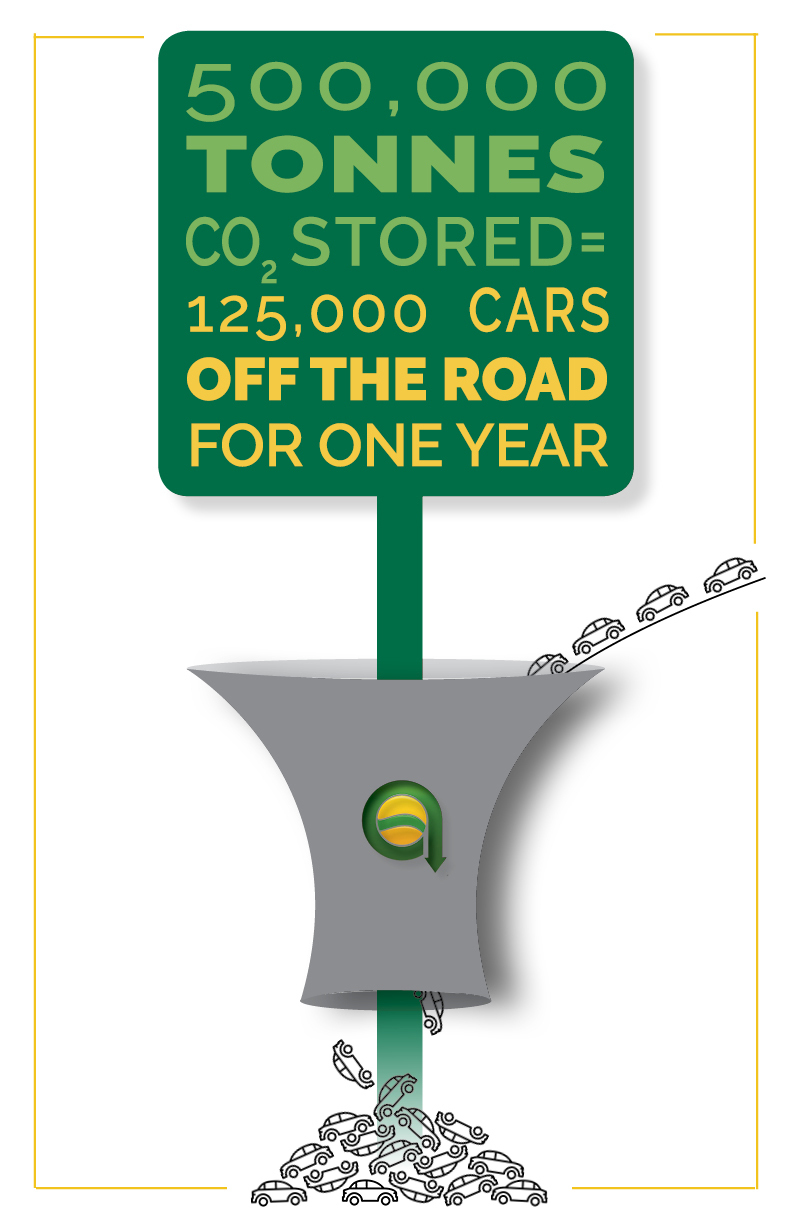The Petroleum Technology Research Centre announced today that the Aquistore Deep Saline CO2 Storage Project, located 3 km from SaskPower’s Boundary Dam CCS Facility, has reached the milestone of permanently storing 500,000 tonnes (500 Kt) of CO2 while the Boundary Dam power plant produces over 120 MW of clean baseload electricity.
“This represents a major success story for Saskatchewan,” noted Ranjith Narayanasamy, the CEO and President of PTRC. “10% of the total amount of CO2 captured at Boundary Dam has been injected via the Aquistore well, into the Deadwood deep saline formation some 3200 metres underground for permanent storage. This is the first project in the world to successfully store CO2 in a deep saline aquifer from a coal-fired power plant and also shows clearly CO2 storage is safe and a part of climate change mitigation.” 
Aquistore is the largest industrial-scale test facility in the world for studying the measurement and monitoring of stored CO2 in a deep saline formation, and it has been a bellwether project for companies and governments only now looking to CCS as a viable solution to reducing greenhouse gas emissions.
“Aquistore began injection in 2015,” notes Erik Nickel, Director of Operations at the PTRC and senior manager of the Aquistore research team, “and we have partnered with proponents of new CCS projects in Alberta, Saskatchewan, and throughout the world, who are seeking Aquistore learnings as they begin to move towards injection. We were first off the mark, and our practical knowledge and learnings are proving of critical importance to other projects.”
A majority of Boundary Dam’s CO2 has been sold by Saskpower to Whitecap for enhanced oil recovery, but the Aquistore program has been an equally important proving ground for the permanent disposal of CO2 and has received a steady stream of 200-500 tonnes per day to help drive the program. Its learnings related to the stopping and starting of injection, monitoring of pressure and geochemical changes, seismic imaging deep in the subsurface, and modeling of CO2 movement, are all world-leading research.
The milestone of 500 Kt underground has demonstrated the safety of such CO2 storage. With over 30 measurement and monitoring technologies deployed on site, the project has been demonstrating the efficacy of some technologies over others, and helping to reduce the cost of CCS overall. Partners over the years have included companies and research groups from Japan, Korea, Canada, United States, Australia, and Europe.
“Aquistore is the first, but certainly won’t be the last deep saline CO2 storage project in Canada,” notes Narayanasamy. “The real excitement rests in the importance of Aquistore in informing the future of CCS as more and more projects come on stream in North America. PTRC’s knowledge and expertise has never been more in demand. In fact, we are in the process of rolling out a course on CCS for industry and others that employs some of our findings from Aquistore. COP 27 clearly stated that CCUS is very important to achieve 2050 net-zero targets, and I am proud of our lead in this area. We must work to continue Saskatchewan’s advantage in the CCUS world.”
- 30 -
Contact
Norm Sacuta, Director of Communications
PTRC
306.502.2101

